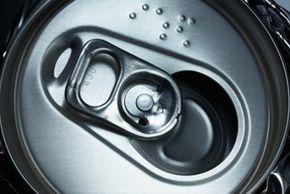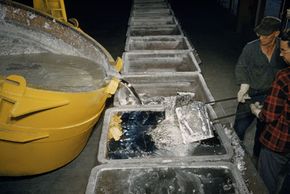If there were ever an element that could have been voted "least likely to succeed," it would be aluminum. Although ancient Persian potters added aluminum to their clay to strengthen their pottery, pure aluminum wasn't discovered until 1825. By then, humans had been using several metals and metal alloys (or mixtures of metal such as bronze) for thousands of years.
Even after its discovery, aluminum seemed destined for obscurity. Chemists could only isolate a few milligrams at a time, and it was so rare that it sat beside gold and silver as a semiprecious metal. Indeed, in 1884, the total U.S. production of aluminum was just 125 pounds (57 kilograms) [source: Alcoa].
Advertisement
Then, in 1886, American Charles Martin Hall and Frenchman Paul L. T. Heroult, working independently, devised a method to extract aluminum from aluminum oxide. The process, a type of electrolytic reduction, required an enormous amount of electrical power, but it produced the metallic form in large quantities. By 1891, production of aluminum had reached well over 300 tons (272 metric tons) [source: Alcoa]. And it was finding its way into a vast array of products, from pots and pans to light bulbs and power lines to cars and motorcycles.
Today, more than a century later, aluminum stands as the most abundant metallic element. Every year, the United States produces more than 5.6 million tons (5.1 million metric tons) [source: International Aluminum Institute]. Much of that aluminum goes into beer and soda cans -- to the tune of 300 million aluminum beverage cans a day, 100 billion a year [source: Can Manufacturers Institute]. Not bad for an element that went undiscovered for such a long time.
In this article, we'll take a closer look at aluminum -- its properties, occurrence and behavior. We'll also examine the life cycle of aluminum, from its production using the Hall-Heroult process to its reincarnation after recycling. And, finally, we'll explore all of the uses for aluminum, including some future uses that may surprise you.
Let's start with the basics: aluminum from a chemist's point of view.
Advertisement



